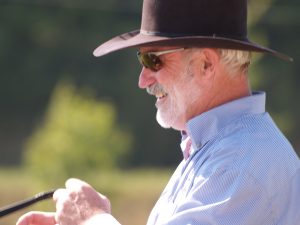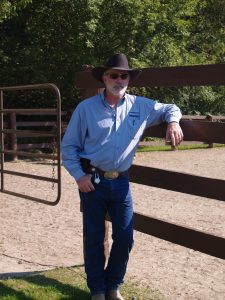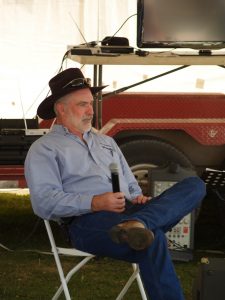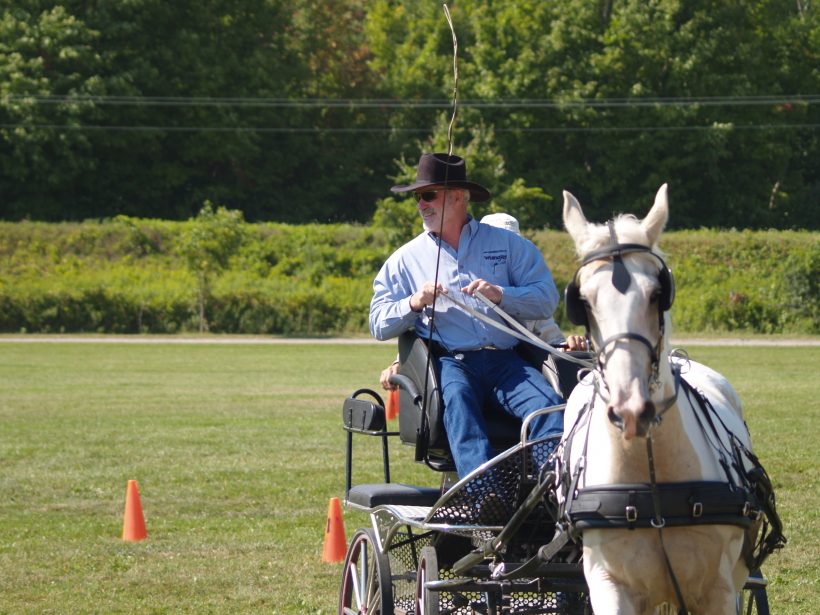THE REAL MANTRACKER
The format for Mantracker, the Canadian reality television series, follows the KISS system of “Keep It Simply Successful.” In each episode, Terry Grant, aka The Real Mantracker, attempts to track and capture two “prey” who have 36 hours to escape capture and to cross the finish line. Neither Grant nor his “Sidekick”, a local guide, knows the location of either the starting point nor finish line which may be 17 to 60 kilometres distant. Did I mention that the trackers are on horseback; the “prey’ on foot? Shanks mare! The setting is always wild untamed woodlands ranging from the badlands of Alberta to heavily forested areas, rivers and lakes in northern Ontario. In one episode Grant and his “Sidekick” had to lead their horses over a railway trestle bridge to cross a wide, raging river. Any horseman knows that is no mean feat in itself without the added concern of a possible train.
Mantracker does not meet the prey before the chase. The prey have varying physical fitness levels and wilderness survival skills. They are only provided with a compass and map, which includes the location of the finish line. Anything else, they provide themselves. A fired flare gun starts the chase with Grant first having to find the location where the prey started before determining their direction of travel.

Bragging rights only were awarded to the victor. So who won? From the prey’s perspective: in season 1 – 27.77% eluded capture to cross the finish line; season 2 – 31.25%; season 3 – 25%; season 4 – 37.5%; season 5 – 29%; season 6 – 33%. And one contestant ran out of time. What were the odds? Of all the prey teams, 7 had only one member make it to the finish line; 9 teams had both members succeed. So, what were the overall odds to beat Mantracker? For one member succeeding – 30%; for the team – 20%.
I met Terry Grant at Randy Bird’s “Celebrating The Mustangs” weekend at Harwood, Ontario, a weekend dedicated to raising funds for Easter Seals. Grant had just come from the Calgary Stampede where he is involved with the Chuckwagon races.
Grant, from High River, Alberta (P.M. Joe Clark country – “I know where he lives and yes, I know Ian Tyson to say hello,”) uses local steeds wherever he goes throughout North America.
Born Saturday, Dec. 6, 1958, Grant grew up in Avening, Ontario (“Like evening with an ‘a’ instead of an ‘e’”), said Grant. “It’s near Creemore.” Not exactly cattle country but Grant and his cousin Dewy Matthews used to ride and round up errant cattle for local farmers.

“I always wanted to be a cowboy,” said Grant. As soon as he could, in 1976, he went west and worked for an outfitter guiding hunters in the fall. Outfitters secure their packs to the horses using the diamond hitch. “I hear that it is a tricky knot to tie,” I suggested.
“Not so much after you have done a thousand or so,” replied Grant. He also worked on cattle ranches.
I made the mistake of calling Grant a “cowpuncher.” A “cowpuncher” punches the cattle on to the train cars at the stockyards, he politely corrected me. “I was a cowboy. I rode the range chasing cattle, fixing fences…” Just like the cowboys in a Louis L’Amour novel I suggested. On cattle drives he learned to ride lead, swing, drag – “I began to feel like a cowboy.”
Grant refers to his grandfather when asked about mentors in his life. A gunsmith who worked for Ontario Hydro, foreman of a brushing crew, “He was noted for feats of personal strength over much younger men.” Grant said his grandfather was a huge, gentle man who taught Terry that one can be strong, confident yet gentle. “I wanted to be like him. To be the best cowboy I could be and to be recognized for it.”
Grant first worked as a cowboy at the Bar U and then the OH, a ranch near Longview, Alberta that dates from 1883. There old timers Burt Shephard and Warren Zimmerman taught him the traditional ways of the cowboy. In 1986, when Terry was 28, Zimmerman recommended him for a Foreman’s job and with that came the recognition he so ardently sought. “It was a feather in my cap,” he said. So how did Grant come to be the key player in a reality show? What other background experience prepared him for the challenge?
He had done some CBC promotional filming related to the west, cattle drives and cowboys. Also, he had “bit parts” in a Japanese movie “Heaven and Earth” involving, naturally, horses. As for trailblazing, in 1977/78 , he was part of a group of some 50-60 riders that established a Heritage Trail from Bronte Creek to Penetanguishene, Ontario, often following abandoned rail beds. Coincidentally, I may have interviewed Grant’s group as he passed near my then present location.

Mantracker was Ihor Macijiwsky’s inspiration. Macijiwsky encountered Grant’s Cousin Dewey, who owns Anchor D. Guiding & Outfitting in Alberta, at the Toronto Sportsmen’s Show while looking for a lead in his proposed Mantracker series. Dewy connected the two and season one was underway. It first hit the airwaves in April 2006. Grant stayed with the show for 36 episodes before retiring, filming throughout North America. Tracking skills he had acquired from his Search & Rescue experiences contributed to the success of the show. “Everything I have done in my life has led to what I do now,” he said. “What you see in the show is who I am,” he added. There was no acting and very little script writing – if any. Grant said he remembers all of the shows and the competitors when asked if one episode stands out in his mind. However, he did say the terrain in northern Ontario was a challenge to navigate and Newfoundland was worse. “Even the moose use the roads to get around there.”
Now retired from the show Grant continues to market himself as The Real Mantracker. So, what is next? Grant was returning west to work with the Canadian Rangers and their Search & Rescue skills. He also wants to teach ordinary people – like moms and their kids “who love the outdoors.” With that in mind he has co-authored a book with such a focus. It’s due to be out in time for Christmas.
